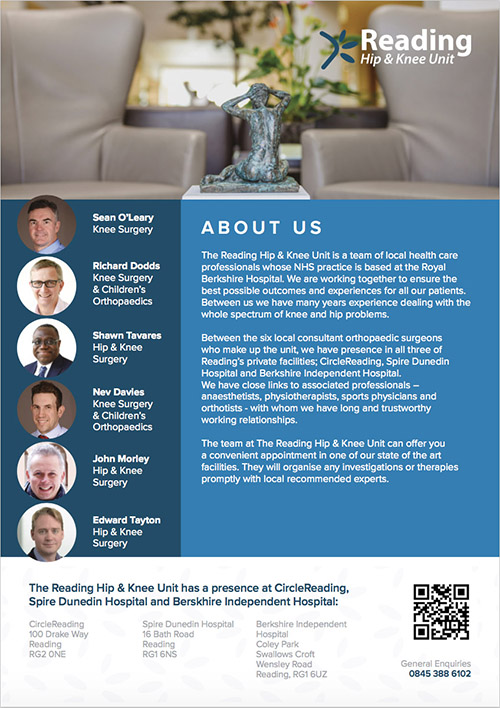
Hip Replacement
If your hip is affected by arthritis, common every day activities such as walking or standing up from sitting may be painful and difficult. Your hip may be stiff, and it may be hard to put on your shoes and socks. You may even feel uncomfortable while resting and regularly have your sleep disturbed.
If painkillers, changes in your everyday activities, or the use of a walking stick do not adequately help to control your arthritic hip symptoms, you may wish to consider hip replacement surgery. First performed in the 1960’s, total hip replacement is now one of the world’s most successful operations, with over 80000 procedures performed in the UK every year. Total hip replacement is an operation that can successfully relieve your pain, improve your mobility, and help you return to enjoying normal everyday activities.
The hip joint is a large ball and socket joint. The socket is formed by the acetabulum, a part of the pelvis, and the ball is formed by the head of the femur, the top of the thighbone.
Total hip replacement is an operation to replace the arthritic ball and socket with a new smooth running and pain-free joint. To do this:
- The arthritic femoral head is removed and replaced with a metal stem that is placed into the canal inside the femur.
- The femoral stem may be held in place by cement, known as a cemented stem or by achieving a press -fit that jams in the femoral canal known as an uncemented stem.
- A new ball made of metal or ceramic is placed onto the top of the stem replacing the worn out femoral head
- The arthritic cartilage of the socket is removed and replaced by a new socket. This can be made of polyethylene that is cemented into the acetabulum.
- Alternatively a metal socket that gains a press-fit in the acetabulum and has either a polyethylene or ceramic bearing surface can be used.
- When a combination of an uncemented socket and a cemented stem is used this is a referred to as a hybrid hip replacement.
- The surgeons in the Reading Hip & Knee Unit often use a hybrid hip replacement with a cemented Exeter Stem (Stryker) in the femur and an uncemented Trident socket (Stryker) in the acetabulum.
- The Exeter/ Trident hybrid hip replacement has excellent long-term results in all age groups of patients with 97.7% survivorship at 10 years in the UK National Joint Registry. Find out more by clicking here.
- The success of hip replacement is seen in the fact that over 97% of patients report a significant improvement in their hip pain and function after surgery in Nationally recorded Patient Reported Outcome measures (PROMS). Find out more by clicking here.







